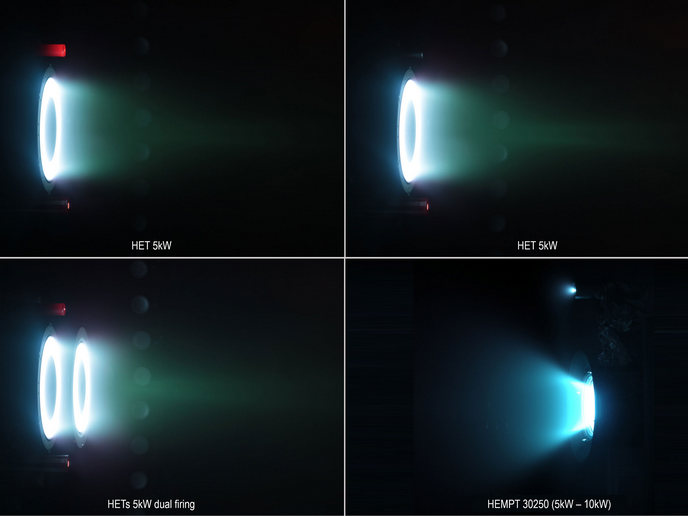Direct drive improves solar electric propulsion performances in a spacecraft
Electric propulsion (EP) is key to the future of spacecraft because it provides a large saving in propellant mass. A variety of electric thrusters are on the market, using propellants such as xenon gas, and solar energy from onboard panels to generate electricity. But current technology requires bulky power converters to deliver electricity at a specified wattage. The EU-funded EDDA project tested how direct drive architecture can bypass the need for a power converter in multiple thrusters already on the market by being directly supplied by an onboard solar array at high voltage, up to 400V.
Thruster performance in simulated space missions
Current technology requires a power converter to boost EP voltage to 250V and higher to fuel thrusters aboard spacecraft. EDDA analysed several direct drive architectures and tested a new electronic power unit developed by partner Thales Alenia Space in Belgium. The power unit is designed to work with some existing and future thrusters, such as the Hall Effect Thruster (HET), designed by multiple space companies, including project partner Sitael, and the High Efficiency Multistage Plasma Thruster (HEMPT) built by Thales-D. According to project coordinator Gilles Bouhours: “EDDA integrates electrical power supply and propulsion. Currently, these subsystems are well separated. For EDDA, power management simultaneously controls several thrusters to optimise power and propulsion performances.” Using solar array simulators, different thrusters were tested multiple times, assessing direct drive EP performance in mission simulations related to launch, orbital change and on-station operations. Test results were highly encouraging, with nearly 100 % of power extracted from panels and negligible thermal losses. Advanced simulations of the thruster were performed by Universidad Carlos III de Madrid (UC3M), where discharge current oscillations were analysed in detail too. In Extenso Innovation Croissance coordinated the project management.
Applications for direct drive architecture
Spacecraft launches are very costly, and removing power converters from the payload not only reduces cost, but also increases the capacities and capabilities of spacecraft with additional fuel or equipment. The direct drive architecture has three main market applications. Telecom satellites in geostationary orbit – those at about 36 000 km altitude above Earth – will be well-served by the significant cost and mass reductions realised by faster Electric Orbit Raising, made possible by mature EP technologies. On-Orbit Services is an emerging market. It allows spacecraft to visit existing satellites and address several needs, such as life extension, spacecraft relocation, maintenance with Orbital Replacement Units and debris removal. Direct drive EP enables deep space exploration. Missions to the moon, Mars and asteroids require transport of massive payloads. For cargo with EP, this requires a large amount of power to provide propulsion, and direct drive solutions help to meet that need. As Bouhours says: “The ultimate aim of EDDA is to provide a powerful solar electric propulsion system to transport any cargo from one Earth orbit to another, or to another planet.” Project partners come from five companies and one university across Belgium, Germany, Spain, France and Italy. By coordinating with the makers of the most prevalent thrusters used in space, EDDA has positioned direct drive technology for rapid uptake.
Keywords
EDDA, direct drive, spacecraft, disruptive technology, High Efficiency Multistage Plasma Thruster, electric propulsion, Hall thruster




